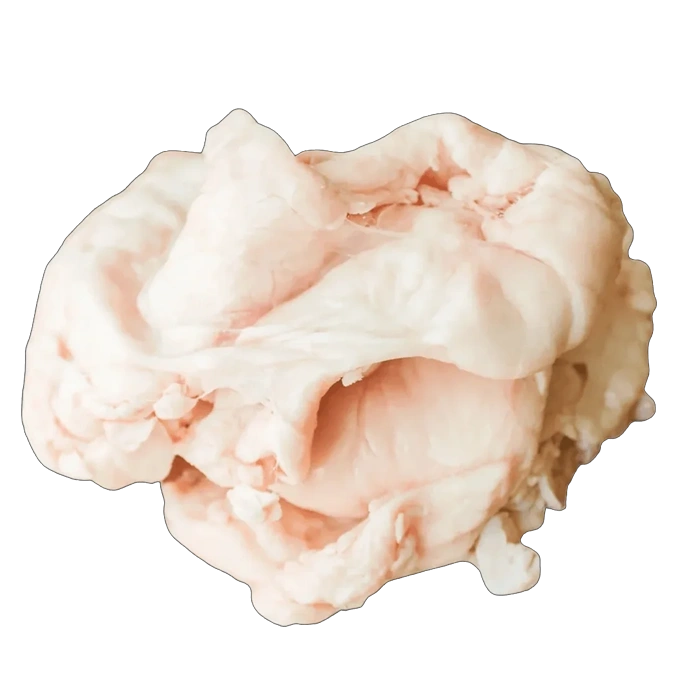Nutritional properties of Mutton Fat
Energy :
900.00 Kcal / 100g
Category : Oils and Fats
Group : Animal Fats & Oils
Composition And Nutritional Value :Mutton fat, derived from the fatty tissues of mature sheep, is composed of a combination of saturated fats, monounsaturated fats, and small amounts of polyunsaturated fats. The primary fatty acids found in mutton fat include palmitic acid, stearic acid, oleic acid, and linoleic acid. Mutton fat is a good source of omega-3 fatty acids, particularly when sourced from grass-fed sheep. It also contains fat-soluble vitamins, including vitamins A, D, and E. The overall nutritional profile of mutton fat can vary depending on the sheep's diet, with pasture-raised animals generally providing higher levels of beneficial nutrients such as omega-3s and CLA (conjugated linoleic acid).
Health Benefits : Mutton fat offers several health benefits, though it should be consumed in moderation due to its high saturated fat content. The omega-3 fatty acids found in mutton fat, particularly from grass-fed sheep, support heart health by reducing inflammation and lowering triglyceride levels. Additionally, CLA, found in mutton fat, has been linked to improved body composition, reduced fat storage, and enhanced metabolic health. The fat-soluble vitamins A and D are important for maintaining healthy skin, bones, and immune function. Mutton fat is also a source of energy and may help provide sustained energy during prolonged physical activity. However, due to its high saturated fat content, it is important to balance consumption of mutton fat with other healthier fats.
Culinary Uses : Mutton fat is widely used in various cuisines, particularly in Middle Eastern, Indian, and Mediterranean dishes. It is often rendered to make mutton tallow, which is then used in cooking and baking. Mutton fat can be used for roasting, frying, or sautéing, as it imparts a rich, savory flavor to the food. It is frequently used in the preparation of stews, curries, and kebabs, adding moisture and depth of flavor. Mutton fat is also used in the production of traditional sausages and can be used in the making of pastry dough for its richness and flakiness. It is less commonly used as a primary cooking fat in Western cuisines but holds an important place in regional cooking traditions.

